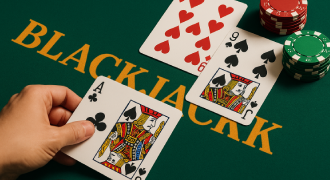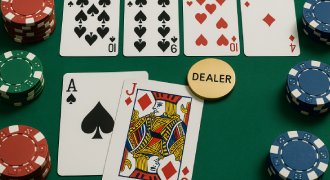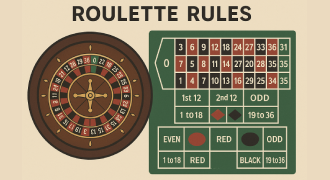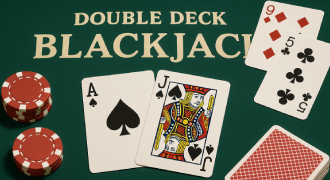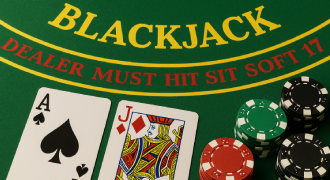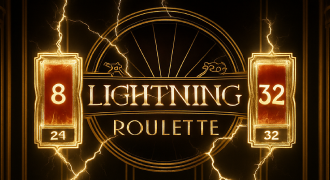Poker Rules: A Beginner’s Guide
Welcome to a clear, practical roadmap for learning the flow of a hand, the table’s moving parts, and common etiquette that keeps games fair and friendly. If you’re starting from zero, this walkthrough emphasizes structure first and judgment second, so your decisions improve naturally with experience.
You will learn the terms, the turn order, and the purpose behind each action before you ever risk a chip. Mastery begins with fundamentals, and that’s exactly what you’ll find here. If you need a single anchor idea to begin, remember that poker rules are designed to make action orderly and outcomes transparent. For absolute newcomers, curated summaries labeled poker rules for beginners can provide a quick foundation before you play your first orbit.
Poker Basics Every New Player Should Know
Poker is a contest of incomplete information where players wager to win pots by either presenting the strongest five-card result or inducing folds. The dealer button marks who acts last, blinds seed the pot, and each betting round moves clockwise. Begin with a tight selection of starting hands and gradually widen your ranges as you understand position and player types.
A short glossary, an opening chart, and a hand-ranking ladder will answer most first-session questions on structure and sequencing. New players progress faster by internalizing a concise outline of basic poker rules before memorizing trick plays or advanced math. A quick reference to poker card rules ensures you know how many cards are dealt and when they are revealed.
|
🃏 Key Concept |
📖 Beginner’s Note |
|
🎯 Goal of Poker |
Win pots by showing the best 5-card hand or making opponents fold |
|
🎲 Hand Rankings |
Royal Flush (highest) → Straight Flush → Four of a Kind → … → High Card (lowest) |
|
🪙 Blinds |
Small blind + big blind seed the pot before cards are dealt |
|
🔄 Turn Order |
Action moves clockwise; dealer button = last to act |
|
🃎 Starting Hands |
Begin tight (premium hands) → expand as you learn position & player types |
|
📍 Position |
Later positions = more information → play wider; early = tighter |
|
💡 Betting Rounds |
Pre-flop → Flop → Turn → River → Showdown |
|
📜 Etiquette |
Act in turn, don’t slow-roll, respect other players |
Poker Table Layout and Key Components
The table is organized to streamline action, protect information, and minimize disputes. Chips of different denominations stack in front of each seat, the dealer button rotates clockwise each hand, and blinds appear immediately to the left of the button. Community-card games feature a burn-and-turn procedure to safeguard randomness, and betting tokens or verbal declarations lock in actions to avoid ambiguity.
Dealer Button Explained
The button indicates who would deal in a home game and who acts last post-flop in most variants. Acting last is an information advantage because you observe others before committing chips, which allows for more accurate sizing and bluff selection.
Small Blind and Big Blind
These are forced bets that create incentives to play. The small blind posts a fraction of the big blind, and the big blind posts the full amount, with action beginning to the left of the big blind. These positions are disadvantageous post-flop because they act first, so tighten your range there.
Ante Overview
An ante is a small contribution by each player or a single big blind ante that accelerates action by enlarging the pot pre-deal. Ante structures are common in tournaments and some cash games to keep pots contested and mitigate excessive folding.
Table Positions and Their Importance
Early position acts sooner and should play fewer hands; late position acts later and can profit with a wider range. The button, cutoff, and small blind each have distinct strategic profiles driven by initiative and information.
How a Poker Hand Unfolds
Most community-card formats follow a consistent order: pre-flop, flop, turn, river, and if needed a showdown. You post blinds, receive private cards, and then navigate four decision points with escalating information and pot sizes. The pace is deliberate so each player can evaluate texture, stack depth, and tendencies before acting. For quick recall, review a digest that highlights poker rules hands so you always know how combinations compare at showdown.
If you ever feel uncertain mid-hand, step back and check whether your line serves a clear purpose such as value, bluff, or pot control. A mental reset like that keeps your process clean while you learn. As you move from demonstration to practice, keep repeating that poker rules exist to protect fairness and clarity for everyone at the table.
Dealing the Cards
In Texas Hold’em, two private cards go to each player, dealt one at a time. The dealer burns a card before each new street of community cards to reduce predictability. Protect your hand with a chip or card protector so the dealer doesn’t muck it by mistake.
Betting Actions: Check, Call, Fold, Raise
Checking passes action without adding chips when no bet is facing you. Calling matches the current bet to continue. Folding surrenders your hand and any chips you’ve committed. Raising increases the price to continue and can create fold equity against weak ranges. Study poker rules betting to avoid string actions and mis-sized raises.
Pre-Flop Betting Round
Action begins left of the big blind and proceeds clockwise. A standard open-raise size keeps decisions consistent and helps you evaluate responses from opponents. Avoid limp-heavy habits by preferring raises that isolate weaker ranges.
The Flop: First Three Community Cards
The flop reveals texture—dry, wet, paired, or monotone—that guides your continuation strategy. Value-bet more on boards that favor your perceived range and apply pressure with semi-bluffs on dynamic textures.
The Turn: Fourth Card and Third Betting Round
On the turn, pot sizes grow and ranges narrow. Use larger sizes on wet boards when you hold strong hands or robust draws, and slow down with marginal holdings that dislike large pots.
The River: Final Community Card and Last Bets
The river finalizes the board and demands precise value targeting. Ask which worse hands can call and which better hands can fold, then size accordingly. Avoid “I hope” bets that don’t accomplish either goal.
Showdown: Determining the Winner
If no one folds on the river, the last aggressor reveals first. Compare five-card results, using kickers as tiebreakers when categories match. Split pots occur when both players present the same five-card combination.
Betting Limits and Game Structures
No-Limit allows wagers up to your stack, Pot-Limit caps raises by the pot size, and Fixed-Limit uses predetermined amounts per street. Each structure changes your bluff-to-value ratio and the risk profile of speculative hands. Tournaments add blinds and antes that escalate on a schedule, while casino cash games use static blinds and flexible buy-ins.
Clarify terminology and seat logistics by reviewing rules of poker game before your first session. Many rooms also publish concise poker cash game rules to remove ambiguity about buy-ins, straddles, and table changes.
Rules Across Different Poker Variants
Hold’em, Omaha, and mixed games share core mechanics but vary in card distribution and showdown construction. Some variants require using specific numbers of hole and board cards, while others introduce split pots or wilds. Before sitting down, confirm how the dealer button rotates, how blinds and antes work, and whether any special procedures apply to the burn or the deal.
If you enjoy fast, compact decision trees, read a primer on three card poker rules to learn ante/play bets and dealer qualification. Players who like tile-hybrid gameplay should review pai gow poker rules to understand how to set high and low hands and when the banker role matters.
|
🎰 Provider |
🎯 Paylines |
🔖 Symbols That Pay |
🎲 RTP |
💵 Min Bet |
🎁 Welcome Offer |
|
⚡ SpinWorks |
20 |
A, K, Q, J, 10, 🃏 Wild Joker |
96.4% |
$0.10 |
100% up to $500 + 50 free spins |
|
👑 CardForge Interactive |
10 |
Royal Icons, 👑 Wild Crown, ⭐ Scatter Star |
97.2% |
$0.25 |
200% up to $300 on first deposit |
|
🃏 NeoDeck Studios |
25 |
Ace High, Pair Emblems, 🎭 Wild Dealer |
96.9% |
$0.05 |
50% up to $200 + 20 free spins |
|
🧪 Quantum Play |
15 |
Suited Emblems, 🏺 Wild Pot, 🎖️ Scatter Badge |
97.8% |
$0.20 |
100% up to $150 on signup |
RTP expresses theoretical return over a vast number of rounds, not a promise for short sessions. At 97.2%, a game is expected to pay $97.20 for every $100 wagered in the long run, though near-term results swing due to volatility and hit frequency. Minimum bets like $0.05, $0.10, $0.20, and $0.25 let you calibrate risk while exploring features. Confirm whether an offer requires a bonus code and check any rollover conditions before committing funds so your expectations match the promotion’s terms.
Essential Rules Every Player Must Follow
Honesty in action is the backbone of any smooth-running table. Verbal declarations are binding in most rooms, clear chip movement locks in your bet, and protecting your hand is your responsibility. Keep your cards on the felt and your larger denomination chips visible to ease counting and avoid accidental underbets.
Clubs and home games post house guidelines alongside general rules for poker so everyone shares the same expectations. If your group experiments with novelty nights, agree on respectful boundaries by stating strip poker rules in advance.
When to Fold, Call, or Raise
Fold when you’re dominated or when pot odds don’t justify continuing in poker rules. Call to realize equity with draws or marginal favorites. Raise to isolate weak ranges, build pots with value, and leverage blockers in bluff lines.
Table Talk Etiquette
Don’t disclose folded cards or live hand details at poker rules. Keep criticism private and polite, avoid slow-rolling, and respect the dealer’s pace. Good etiquette speeds the game and keeps focus on fair play.
Avoiding String Bets and Angle Shooting
Place your chips in one forward motion or state your action before moving them. Slow, ambiguous movements can be misread as angles, which erodes trust. A summary of simple poker rules pinned near the table helps beginners avoid mistakes while they build confidence.
Acting Out of Turn Rules
Acting before your turn can reveal information and is usually binding if action doesn’t change. If you’re unsure, ask the dealer for guidance and follow posted procedures. Many rooms echo the spirit and the letter of rules of poker to keep the game fair for all seats.
Online Poker vs. Live Poker Rules
Digital software automates shuffles, deals, and side pots, while live rooms rely on dealers and floor staff. Online clients may include time banks, auto-muck options, and settings to protect your pace and privacy. Clear site pages summarize poker rules for button movement, blind posting, and disconnection policies. Some rooms also publish poker game rules that detail seat changes, sitting out, and missed blinds to prevent abuse.
Tips to Learn Poker Rules Quickly
Use short, focused drills to lock in turn order and action sequences to better learn rules of poker. Create flashcards for positions, betting rounds, and tie-breaking so the cadence becomes automatic. Ten minutes a day beats a single marathon session because repetition cements memory.
Variant enthusiasts can speed up onboarding by skimming structured summaries of chinese poker rules before joining a mixed-game night. If you forget a step mid-hand, breathe, ask for clarification, and proceed methodically to maintain composure and accuracy. Clear study habits keep learning efficient, and structured practice ensures you feel comfortable as pots grow.
Using Poker Hand Charts
Charts provide position-based starting guidelines and keep you from drifting into overly loose or overly tight play. Update your ranges as lineups change, and annotate common mistakes to avoid repeating them.
Practicing on Free Poker Apps
Play-money environments let you rehearse decisions without risking your bankroll. Focus on mechanics first, then add hand reading and bet sizing. Track a few hands per session for review so improvements become permanent.
Common Beginner Mistakes to Avoid
Novices often call too much, bluff without a coherent story, or ignore position. Slow, inconsistent bet sizing also signals hand strength and invites exploitation. A calm review routine after each session corrects leaks before they become habits. When in doubt, return to the core structure and remember that poker rules are there to streamline decisions and reduce friction.
Learn Rules Before Playing for Real Money
Start at small stakes or with friends who value teaching moments over results. Read the room’s procedures, verify buy-in limits, and learn how to color up chips to simplify stacks. Keep a short checklist in your phone or notebook and bring it to the table until everything feels natural. If you’re ever unsure about seat changes, buy-in caps, or re-entry options, ask the dealer or floor politely before the next hand begins. Well-timed questions prevent misunderstandings and respect the flow established by poker rules.
FAQ
What happens after the river card is dealt?
After the final card is revealed, players take their last action in order, and if no one folds, the hand proceeds to a showdown. The last aggressor shows first, then others reveal in turn or muck if beaten.
Are poker rules consistent across games?
Core procedures are similar, but variants can change card usage, split pots, or introduce antes differently. Always check the house sheet to confirm any special procedures before you sit.
How are ties resolved?
Ties are determined by comparing the highest five-card result, with kickers used when necessary. If identical five-card combinations occur, the pot splits evenly among winners.
Can I see another player’s cards?
No, private cards remain concealed unless revealed at showdown or voluntarily shown. Asking to see a mucked hand is generally discouraged and may be restricted by house policy.
Is there a minimum bet?
Minimums depend on the format and structure, with No-Limit often allowing any wager of at least the big blind and Fixed-Limit using set amounts. The table plaque or rules sheet will outline specific thresholds.
When does a hand go to showdown?
A hand reaches showdown when betting concludes on the river without all but one player folding. If everyone but one player folds earlier, no showdown is required and the last player standing wins the pot.

